Ingoldisthorpe Water Recycling Centre (2019)
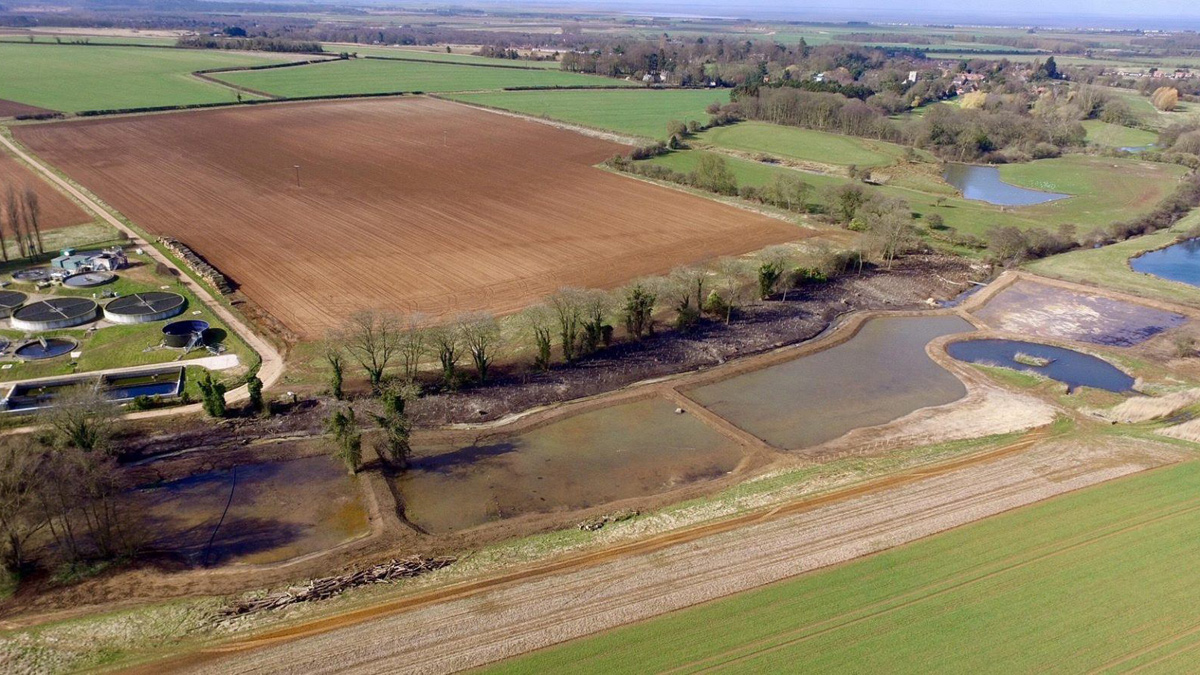
Ingoldisthorpe Wetland - Courtesy of Norfolk River Trust
Ingoldisthorpe WRC was identified by the EA under ‘no deterioration’ as requiring additional measures in order to address the tightening of ammonia and phosphorus levels (1mg/l NH3-N and 4.5mg/l P) in order to sufficiently treat all required flow, meet discharge consents and maintain the quality of the receiving water bodies. The existing works serves a population equivalent (PE) of 6915, has a dry weather flow (DWF) of 1400m3/d and the flow to full treatment (FFT) is 3640m3/d. The works comprises a screened inlet works with balance tank, 2 (No.) primary settlement tanks, 3 (No.) trickling filters, a storm tank, 2 (No.) humus tanks and 4 (No.) lagoons.
Project drivers
Water quality had deteriorated downstream of the outlet of the Ingoldisthorpe Water Recycling Centre (WRC) and if left untreated, would have effected the quality of the River Ingol, which is one of only 200 chalk rivers and streams in the world, providing a rare habitat for a diverse group of plants and wildlife and the course of the river runs very close to the Norfolk coast.
The Environment Agency (EA) required Anglian Water to ensure that Ingoldisthorpe Water Recycling Centre (WRC) achieved a discharge consent of 1mg/l NH3 by 31 March 2018.
Having explored various options it was found that in order to meet this new consent the site would require a treatment plant that had both a high capital cost and high carbon footprint. Therefore an alternative soft engineering solution was proposed in the form of a non-invasive wetland solution to improve water quality, which would sit adjacent to the WRC. The EA accepted this solution and raised the discharge consent at the works to 3mg/l NH3.
With carbon reduction at the heart of its delivery strategy from early on, a collaborative working ethic between Anglian Water (AW), the @One Alliance, Norfolk River Trust (NRT) and the Environment Agency was established to deliver a first for the AW region; a fully established water treating wetland ecosystem
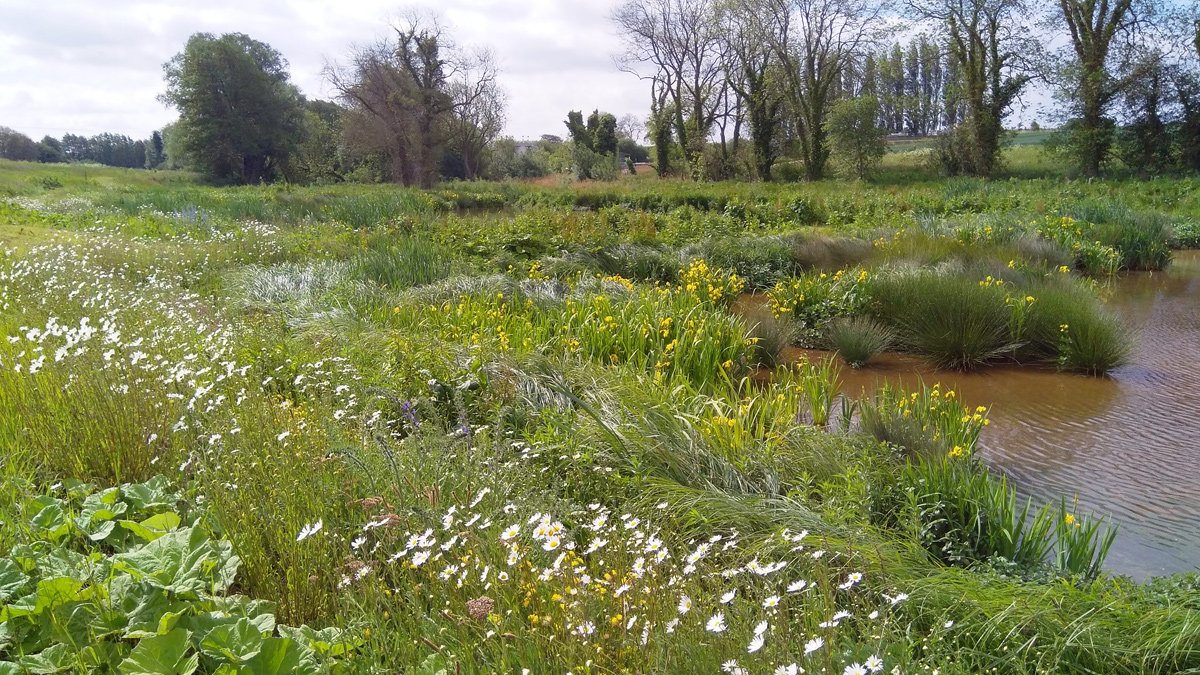
Ingoldisthorpe Wetland – Courtesy of Norfolk River Trust
Project funding
This project was funded by Anglian Water and the @One Alliance as part of their strategic commitment to improve water quality in affected rivers. This scheme helped to bring together the community by involving the local land owner, who at the time had a suitable area to utilise; a low-lying plot which was unsuitable for crop production and the woodland that was present had been badly affected by ash die-back fungal disease.
Construction and integration with existing works
The final design and installation of the project was not always smooth and key challenges of resource turnover and the respective design legacies this involves had to be overcome; strong team collaboration and huge support from Glasswell & Last (the M&E supplier), solved these challenges. In order to fully integrate the project with the existing treatment works a number of impact plans were required. Methodologies and contingency plans were developed for breaking into the balance tanks, diverting flows through temporary overpumping, coordinating a site shutdown for power upgrade and new meter installation, and modifications to the existing lagoons to convert them into a wet well feed chamber, to the sand filters, and to a final settlement tank.
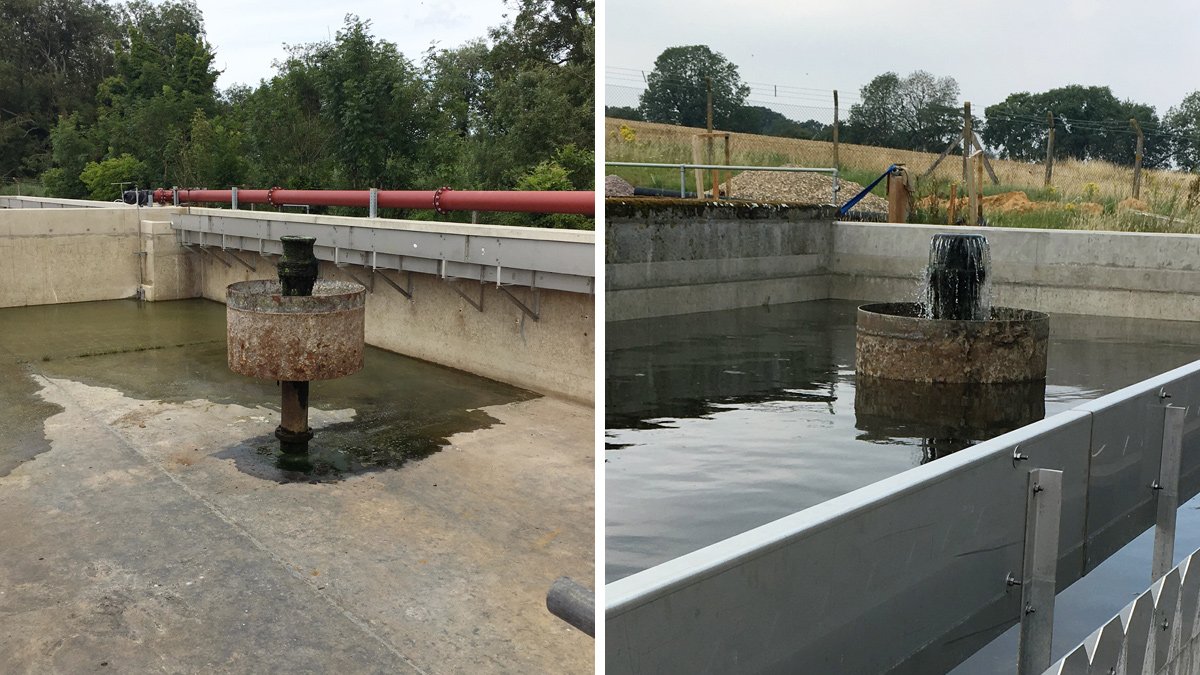
(left) Empty lagoon cell converted into the feed wetwell for tertiary treatment and (right) first fill of the wetwell following modifications – Courtesy of @one Alliance
Throughout the construction and commissioning phase the programme was continuously reviewed at the start of each key stage ensuring that cost, time on site, re-work and waste was kept to a minimum. Overall the scheme enabled £4.2m (FBP £7.89m, FOTC £3.69m) to be reinvested in schemes in Anglian Water and back into the @One Alliance partner organisations.
Overcoming programme challenges
A delay in the flocculation tank pipework installation, due to a combination of design and supplier issues, required the impact plan to be extended for a significant duration. The complexity of the works in the lagoon cells also resulted in impact plan extension and unfortunately the site picked up a failure as a result, however this design was being driven by the huge carbon savings.
Pipework was delayed for 3 weeks due to the supplier being hacked resulting in order and manufacturing loses affecting the whole water industry. Temporary works in the form of edge protection fell over due to high winds and caught on a filter arm, resulting in the site picking up a solids failure.
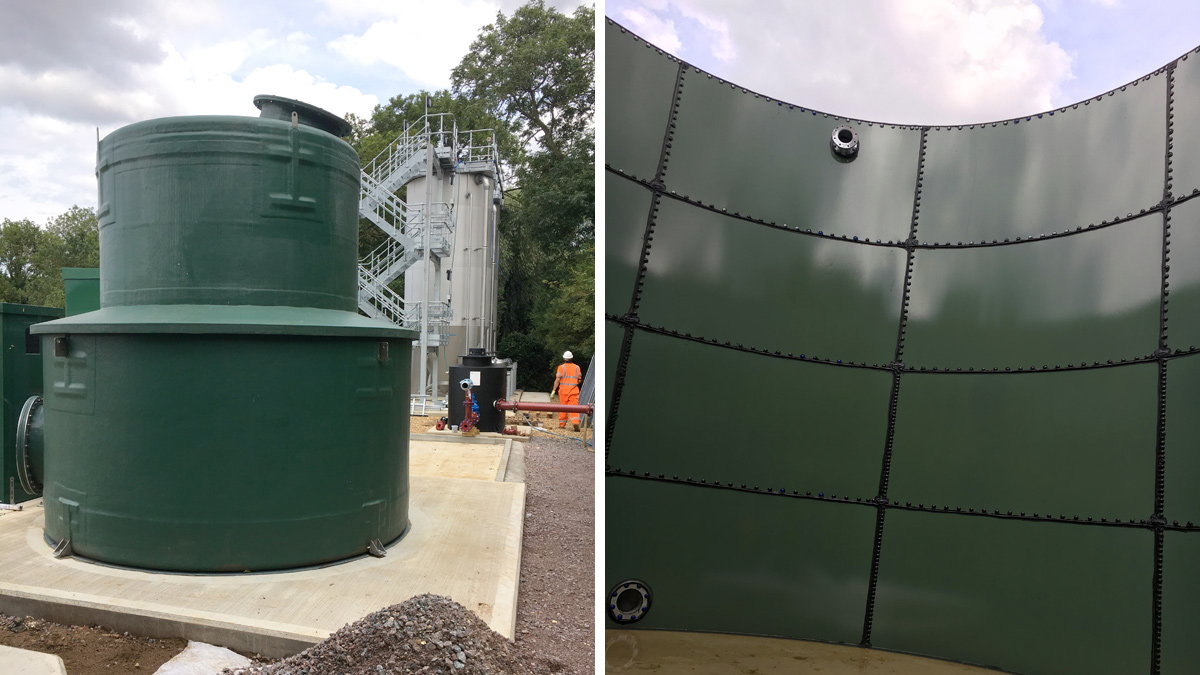
(left) EPS Water standard ferric dosing package and (right) Hayes GFS settlement tank – Courtesy of @one Alliance
Although this scheme was successful in pulling back programme and delivering a environmentally sensitive and carbon reduced solution (which significantly challenged project costs as per a TOTEX scheme) there were significant learnings going forward:
- Design not complete before hitting site resulting in delays on site and multiple TQs and variation orders.
- High staff turnover mainly between DM2 and DM3, of both delivery team and designers.
- Design support during construction lacking – view that once on site that design support is not required, TQ to have quicker response times, designers to get out to site.
- Use of existing assets needs more rigorous thought in terms of buildability, temporary works and the importance of project rehearsal.
- How critical the relationship between operations and delivery team are throughout construction and commissioning phase.
- Transparency required from Tier 2s in resource levels and availability.
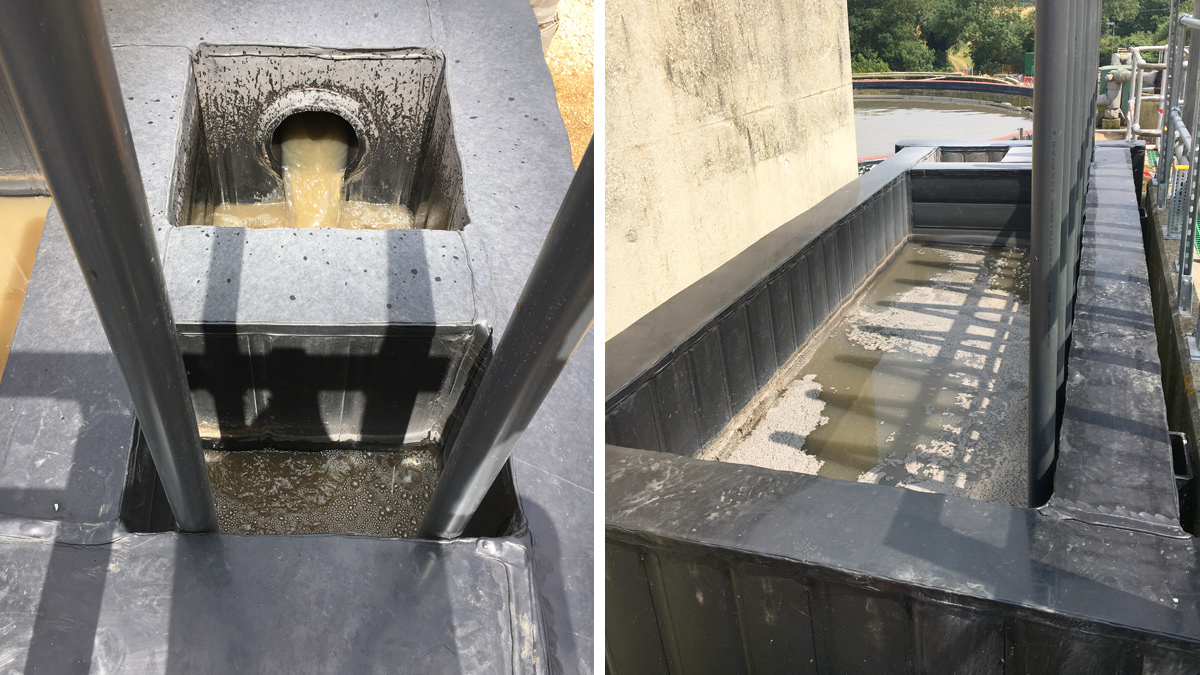
(left) Weholite® flocculation tank (right) flocculation tank with aeration blower system – Courtesy of @one Alliance
Carbon cost reduction
If the scheme had gone down traditional construction methods it would have had a capital carbon figure of 396 CO2 eT as set out at DM1. Taking the wetland option this figure was reduced by 55% achieving 179 C02 eT. The project won two Anglian Water Supplier Awards for Drop CO2 (Carbon Reduction and Energy Impact Award and the Environment and Community Award) recognising the great solution the team delivered.
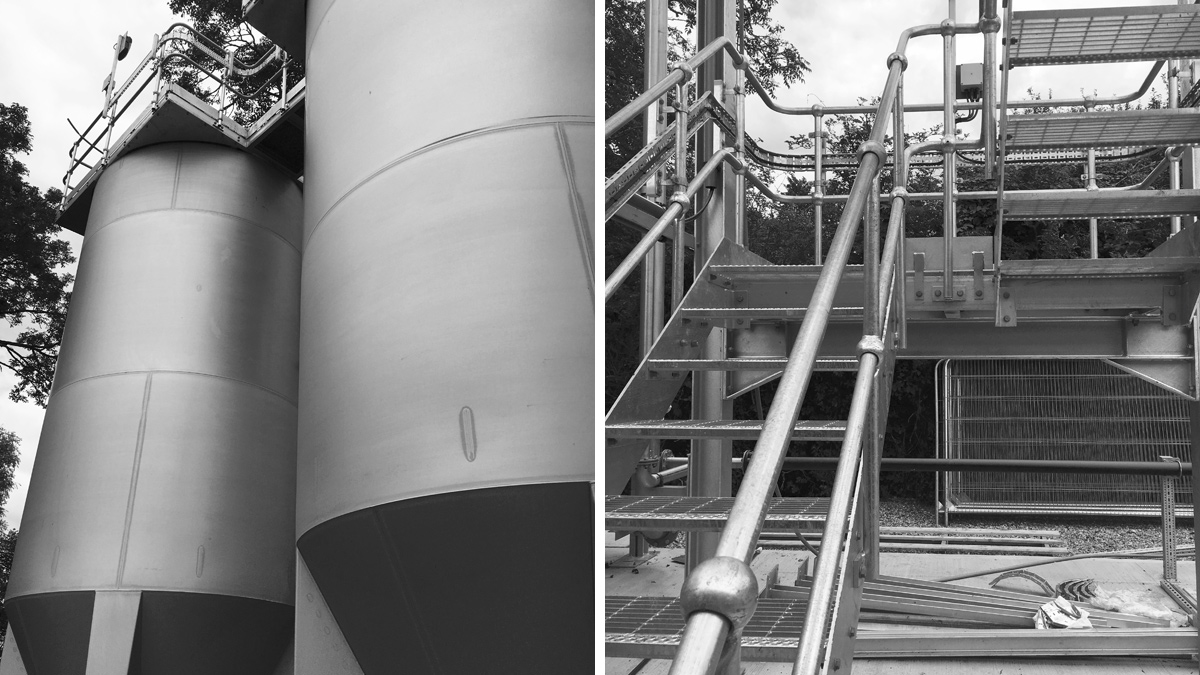
(left) Hydro International filter package vessels and (right) access platform to filter package vessels – Courtesy of @one Alliance
Project benefits
The ecosystem created has been planted with plants that are native to chalk stream environment and have become a haven for wildlife. This scheme provides a wider benefit to the local community, being fully accessible for locals and visitors to the area. A footpath around the site allows people to experience the sights and sounds of the wetland, which is now flourished with birds, dragonflies and frogs. It is also proving to be a great tool for learning and research, for local schools; demonstrating a real-life example of how developing new wetlands can both improve water management and deliver a high biodiversity impact.
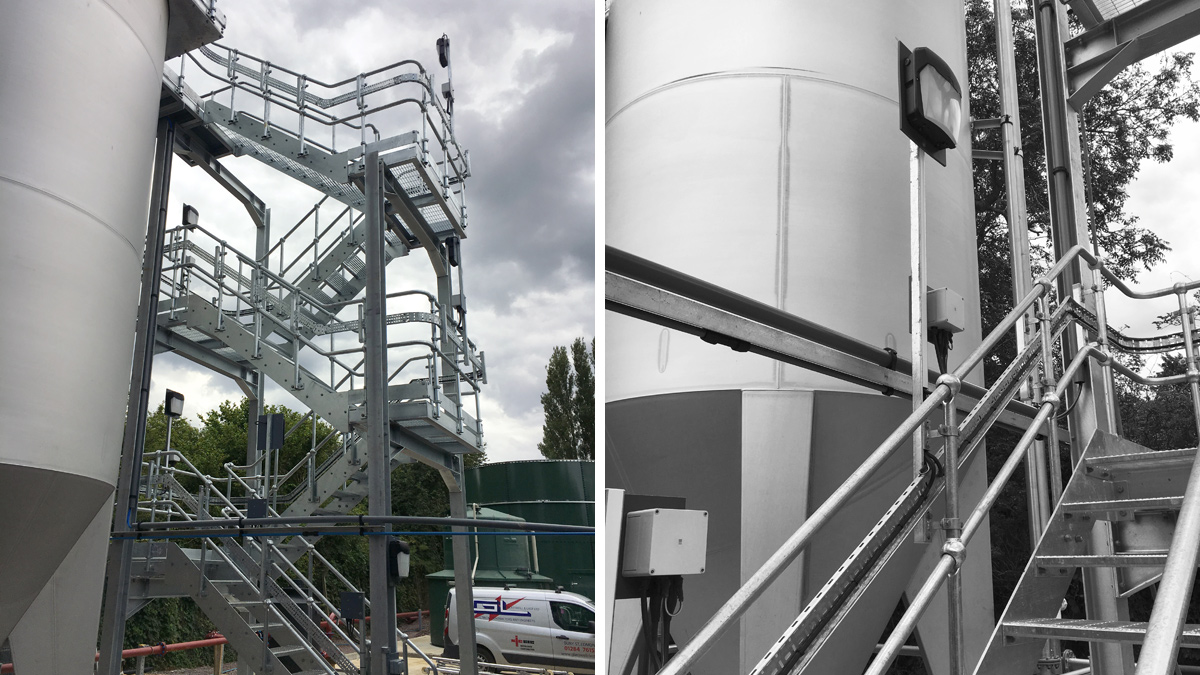
Hydro International filter package vessels and access platform – Courtesy of @one Alliance
Successful delivery
The team successfully delivered a scheme which had environment, carbon reduction and sustainability and the forefront of everyone’s mind from the start. With a proactive attitude to strive to achieve something different and that is what was achieved.
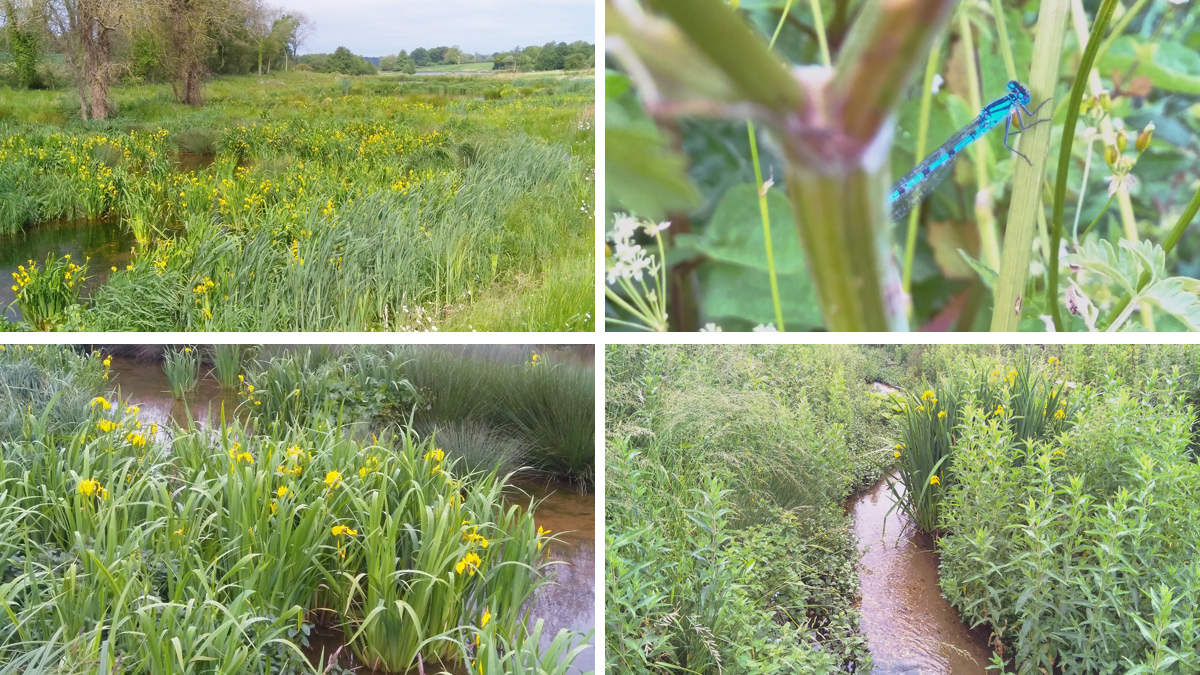
Ingoldisthorpe Wetlands – Courtesy of Norfolk River Trust
The scheme has set a president for future wetland schemes as an alternative wastewater treatment solution, to think outside of the box to deliver a reduced carbon WRC solution, which encompasses all the right things; off-site assembly, modular build and use of alternative materials.





